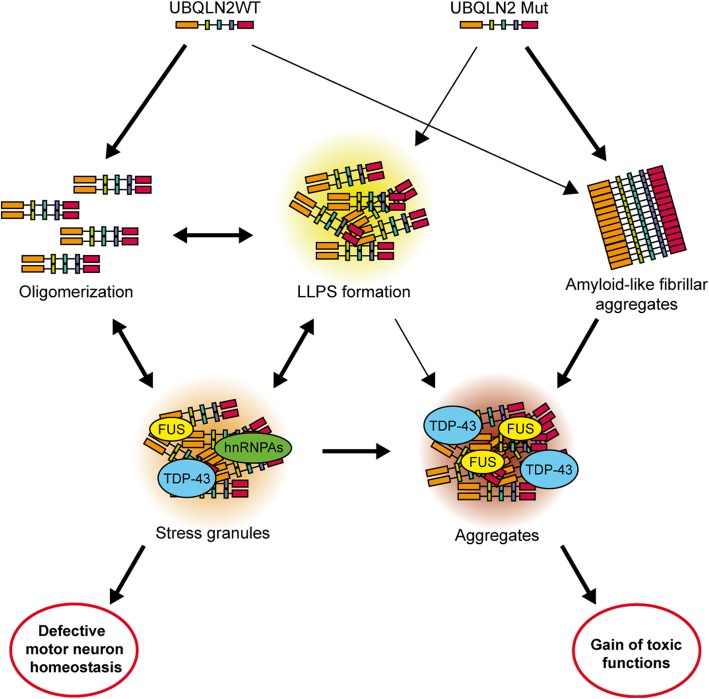Fig. 3.
The integrative model for WT and mutant UBQLN2 pathology in ALS. WT UBQLN2 is prone to form oligomers with itself and associates with ubiquitinated substrates, chaperones and other molecules. WT UBQLN2 oligomers can assemble into membraneless organelles and form liquid-liquid phase separation droplets. The mechanism is UBQLN2 levels-dependant. Ubiquitin-binding can prevent this self-assembly and oligomerization of UBQLN2 and an increase of ubiquitin can remove the UBQLN2 LLPS formation. LLPS formations as well as oligomers of UBQLN2 can also become stress granules (SGs). The persistence of SGs can become aggregates or can lead to defect in RNA processing, leading to motor neurons death. Mutant UBQLN2 forms amyloid-like fibrillar aggregates, even in the absence of ubiquitin and chaperones. UBQLN2 mutation increase its insolubility and ubiquitin-binding. A reduced HSP70 binding and autophagy degradation can lead to the formation of aggregates. Aggregation is suspected to be driven by the UBA domain, while the UBL domain seems to inhibit aggregations. UBQLN2WT: Ubiquilin-2 wild-type; UBQLN2 Mut: Ubiquilin-2 mutants; LLPS: Liquid-liquid phase separation; FUS: Fused in sarcoma RNA-binding protein; TDP-43: TAR DNA-binding protein-encoding TDP-43; hnRNPAs: Heterogeneous nuclear ribonucleoprotein A

